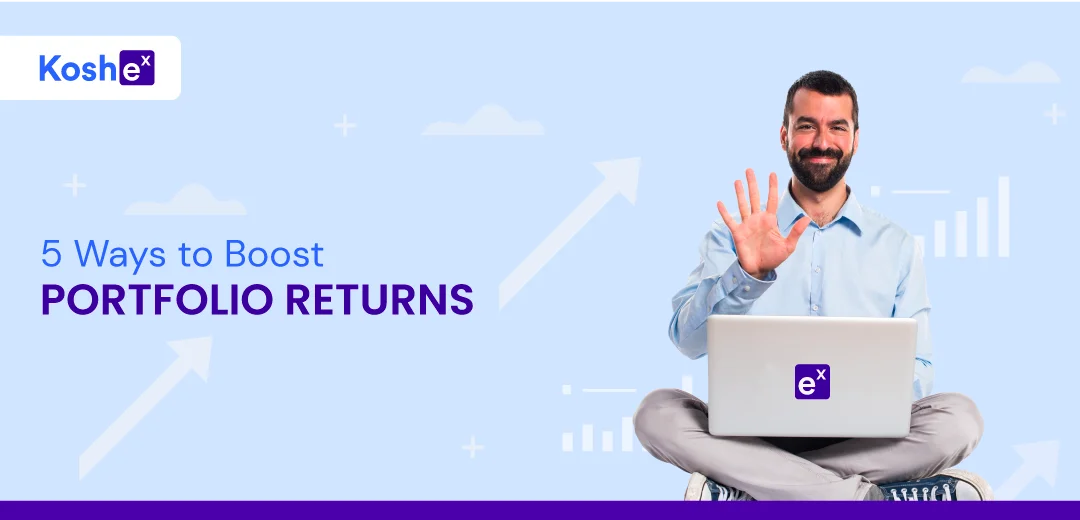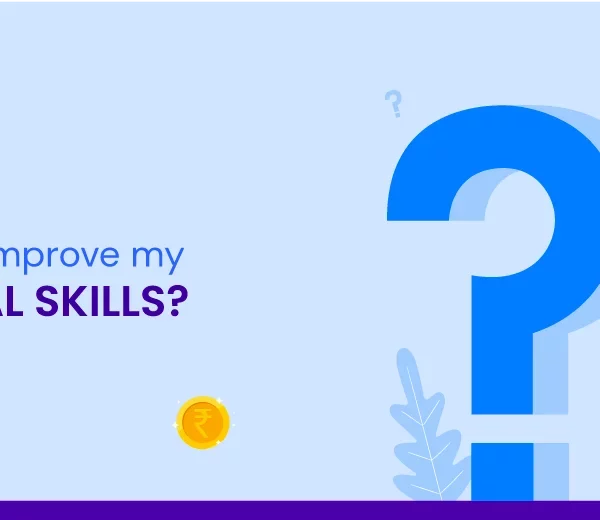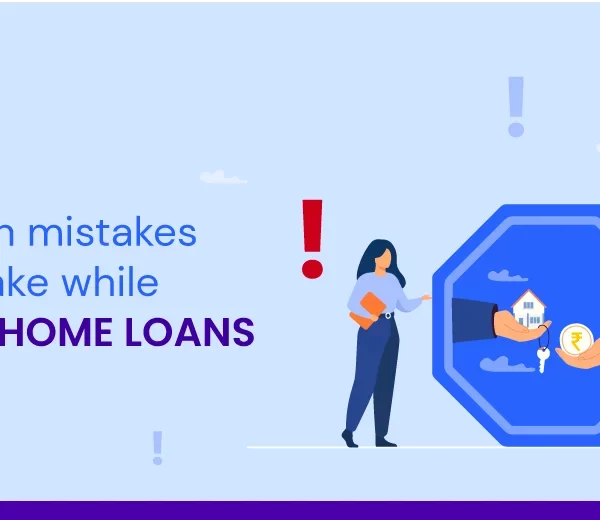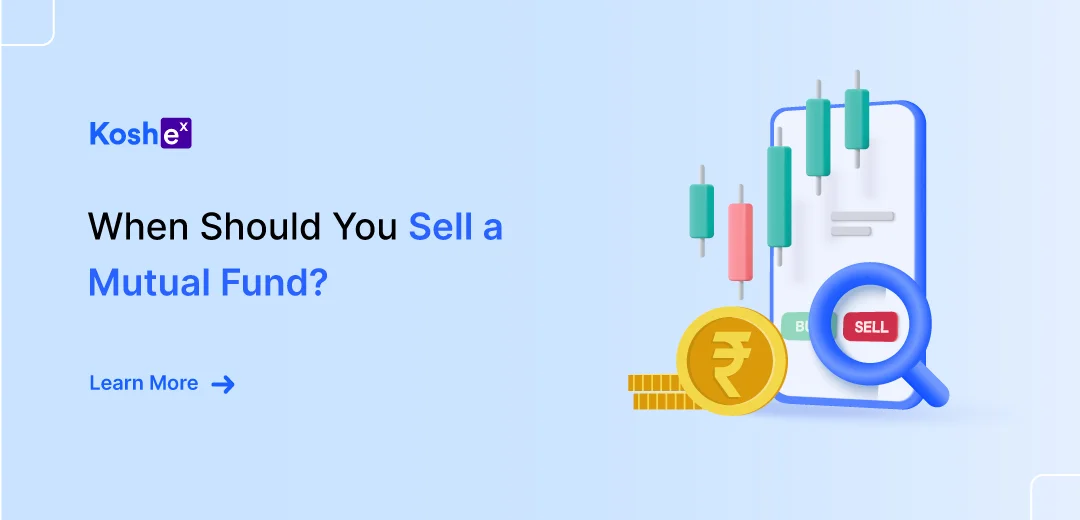5 Boost Portfolio Returns
Wealth generation is important for every generation, be it millennials or Generation Z.
We make investments with the hope that we would be making higher returns in the long term and that the corpus will help you achieve your goals and financial freedom.
So, we are putting together a list for you of the best ways you can boost your portfolio returns.
Firstly, What Is An Investment Portfolio?
An investment portfolio is a collection of assets and it can include investments like stocks, bonds, mutual funds, and exchange-traded funds.
The portfolio should be diverse as it is crucial for its success. Let’s say, Mr. A is putting ₹5,000 every month in a LIC policy, ₹7,000 in an equity mutual fund scheme, and ₹3,000 in a bank fixed deposit, then he should look at all these accounts collectively, as this is his investment portfolio.
How To Create An Investment Portfolio?
But what if you haven’t put your money anywhere like Mr.A? So, how can you start an investment portfolio? Should you also go ahead and put your money in a LIC policy, mutual fund scheme, and bank fixed deposit like Mr.A? Before you construct an investment portfolio for yourself, you should answer the below questions.
- What are your goals?
- How much risk am I willing to take?
- How much time am I willing to stay invested?
In the world of investing, there are two statements that summarize everything – High risk, High reward, and Low risk, Low reward.
So, if you want to earn higher returns, you are told to invest in high-risk instruments and vice versa. But this depends on each individual and their goals.
You have to write down your goals, and understand how much risk you are willing to take and how much time you are planning to stay invested.
How To Boost Your Portfolio Returns?
Automate The Process
The best way to earn higher returns is by being consistent. No matter how the stock market performs, it is important that you stay put and continue investing.
Automating the investing process means making regular contributions to your portfolio. The more consistently you save and invest, the faster your investment portfolio will grow.
For example, when you start a SIP in an equity mutual fund scheme, you will be investing the same amount each month, irrespective of the performance of the stock market.
This means you will buy more mutual fund units when the market is down and fewer units when the market is up. Over time, you will end up with a sizable corpus.
Automating your investments takes your willpower out of the equation, ensuring that you invest regularly every month.
Manual investing might tempt you to skip a couple of months and spend the money. If you are looking to automate your entire savings or investing process, head over to Koshex and create an account in less than 2 minutes.
It is a completely paperless process that will help you organize your finances.
Take Calculated Risks
Investing involves putting your money into the unknown. That doesn’t mean you should completely avoid stocks and invest only in bonds or fixed deposits, which are considered to be safe instruments.
While bonds, debt mutual funds, and recurring deposits are considered to be safe, they might not make you enough money to outpace inflation and provide the portfolio growth you need to achieve your financial goals.
Hence, you need to find a way to balance risk and returns in a way that offers a combination of safety and portfolio growth.
When you take too much risk, it can result in large amounts of volatility and potential losses. However, if you don’t take enough risk, your portfolio might not make you higher returns.
So, try achieving a balance by allocating a portion of your portfolio to equities and some to safe assets.
Avoid Overreacting To Market Volatility
Markets are volatile from time to time and there could be a number of reasons for that – from inflationary pressures to geopolitical tensions to global policies.
Market volatility affects your portfolio returns, worrying all investors. So, what can you do in these situations? Withdraw your money? No.
Redeeming your investments because of market volatility is not a good decision as premature withdrawal could affect your portfolio returns considerably.
When the market declines, see it is a good thing as you will be able to buy stocks at a cheaper price. If you don’t want to buy stocks and take the risk, you can try investing in equity mutual funds via the SIP (Systematic Investment Plan) mode.
Equity mutual funds invest predominantly in stocks but the amazing thing about investing in equity MFs via the SIP mode is you will get more units when the market is down.
If you are someone who is already investing via the SIP mode in equity mutual funds, make sure that you don’t stop investing as you will get more units when the stock market falls.
Rebalance Your Portfolio
Investing isn’t a one-time exercise. Your investment portfolio has to be analyzed from time to time to check if it is still ideally aligned with your risk-return profile.
Portfolio rebalancing is the method by which investors modify the asset allocation in their investment portfolios.
This method is crucial and has to be done as the amount of money in each asset class keeps fluctuating because of the movement in markets and the changes in the economy.
When you first design and commit funds to an investment strategy, it is known as allocating your assets. For example, if 70% of your current investment portfolio is in stocks and 30% in bonds, it would be considered a balanced portfolio.
However, the problem here is that, over time, these allocations in your portfolio don’t stay the same.
Let’s say the stock market’s value doubles in five years while the value of the bond market grows not nearly as much.
Then, the value of the stocks in your portfolio would become much greater than the value of the bonds. This will put your investment portfolio significantly out of balance.
Hence, you should rebalance your portfolio from time to time, so that you can earn good returns and minimize your risk.
Focus On Taxes
Taxes are a part of our lives. You need to understand that you might have to pay taxes on the gains you earn from your investments.
But there are ways in which your investments can help minimize your taxes. For example, when you invest in ELSS (Equity Linked Savings Scheme) funds, you can save up to ₹46,800 in taxes.
With ELSS, you can get an income tax deduction of up to ₹1,50,000 every year.
On the other hand, you would have to pay taxes on the investments you make – be it stocks or mutual funds. There is a 15% tax on short-term capital gains, including the profits you make on equity shares, equity-oriented mutual funds, and units of business trust.
With tax-saving equity funds, the applicable tax is 10% without indexation if the long-term capital gain (LTCG) tax is more than ₹1 lakhs.
The same goes for non-tax saving equity funds too, with the applicable tax being 10% without indexation if the LTCG is more than ₹1 lakh.
So, when you invest in any asset, think about the taxes that you will be paying when you redeem your investments. Also, if you wish to save on taxes, you can invest in suitable instruments accordingly. When you fail to think about the taxes you have to pay, you might end up hurting your portfolio returns.
In The End…
When you make smart investment decisions, you will be able to make higher returns and minimize your losses.
Don’t let emotions take control of your financial decisions and try to be rational when it comes to saving and investing your money.
Once you have created a diversified portfolio, you don’t need to worry much about market volatility as your portfolio will be able to withstand the ups and downs.
If you are looking to create an investment portfolio for yourself, head over to Koshex and create an account today.
Tell us your life goals and risk tolerance, and we will create a hyper-personalized investment solution for you.
We will automate your investments and get your financial life in order with our new-age tools. Sign up with us today.









Leave a Comment